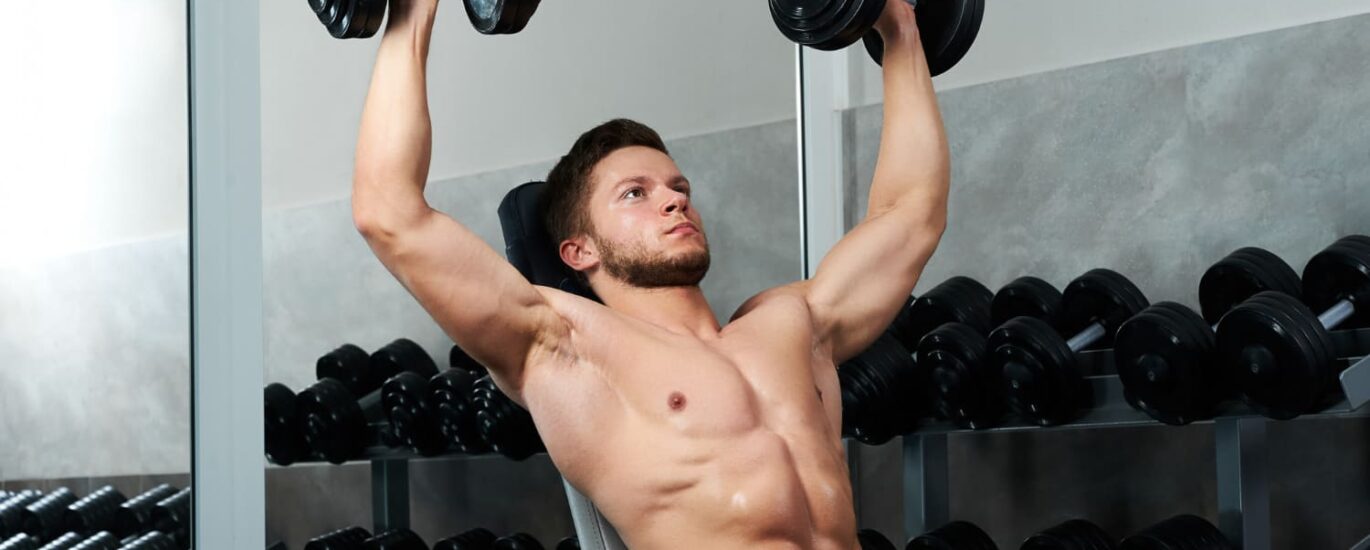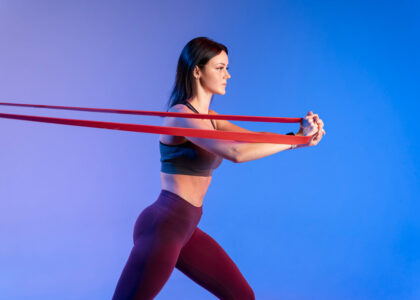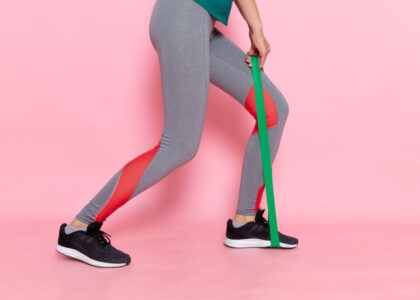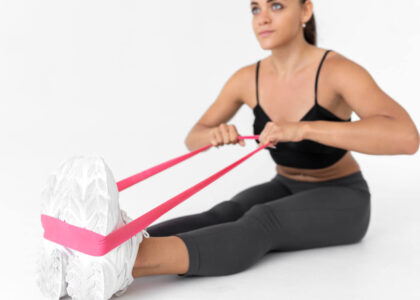Deadlift | Cardio | Triceps | Chest | Rhomboid | Glutes
As a variation of the traditional shoulder press exercise, the seated arnold press targets the front and side heads of the deltoid muscles. This movement has been popularized by Arnold Schwarzenegger, who is a legendary bodybuilder. This exercise strengthens the shoulder muscles while engaging the core and stabilizer muscles, making it a compound exercise.
How to do seated arnold press :
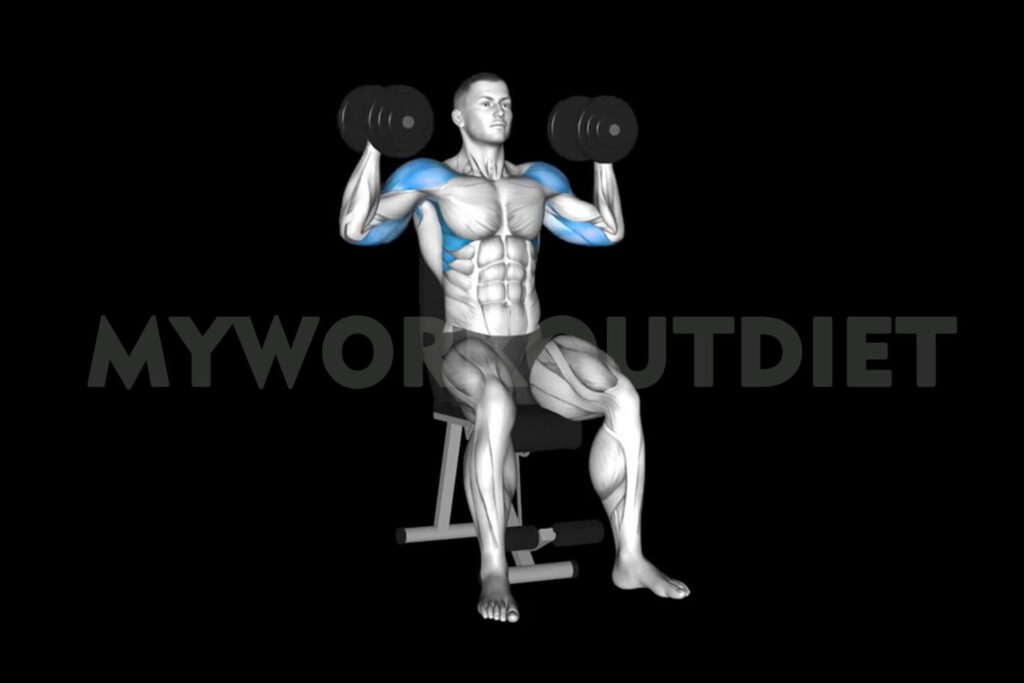
- With your feet firmly planted on the ground, sit upright on a bench or chair.
- Take an overhand grip on a dumbbell with palms facing you, and hold it in each hand.
- As you rotate your wrists outward, turn the dumbbells so that your palms are facing forward as you begin this movement.
- As you exhale, extend your arms and engage your core while pressing the dumbbells overhead.
- At the top, pause briefly, then slowly lower the dumbbells back to the starting position, rotating your wrists inward.
- Perform the movement for the desired number of repetitions while maintaining proper form.
These tips will help you :
- Don’t arch your lower back and keep your spine neutral.
- As you perform the movement, make sure your elbows are in line with your wrists.
- The exertion phase (pressing) must be exhaled, and the lowering phase must be inhaled.
- It is recommended that you use a light to moderate weight for the Seated Arnold Press and focus on proper form when doing this exercise.
Check Out Arnold Press Muscles Worked
These muscles are primarily worked by the Seated Arnold press:
- Deltoids (Shoulders):
- Anterior Deltoid: When pressing overhead, the front portion of the shoulder muscle is heavily targeted.
- Lateral Deltoid: As the weight is lifted laterally, the side part of the shoulder muscle is engaged.
- Trapezius: This muscle is located in the upper back and shoulders and is involved in stabilizing the movement and assisting in overhead pressing.
- Triceps Brachii: During the overhead press, the triceps, located at the back of the upper arms, aid in extending the elbows and straightening the arms.
- Core Muscles: To maintain a stable and upright posture throughout the exercise, the rectus abdominis (abs), the obliques, and the erector spinae (lower back) are engaged.
- Forearm Muscles: Rotation of the wrist in the Arnold press also works forearm muscles, including the brachioradialis and flexor and extensor tendons.
Besides engaging the deltoids, the Arnold press also recruits several stabilizer muscles, making it a powerful compound exercise.
Arnold Press vs Shoulder Press
Arnold Presses and traditional shoulder presses can be compared, but they differ in several ways:
- Grip and Hand Position:
- Shoulder Press: You usually grip the bar with a pronated (palms facing forward) or neutral grip throughout the movement.
- Arnold Press: This exercise begins with a pronated grip, then the wrists are rotated outward, resulting in a supinated grip during pressing.
- Muscle Emphasis:
- Shoulder Press: This exercise is primarily focused on the anterior (front) and lateral (side) deltoid muscles, as well as the triceps muscles.
- Arnold Press: In addition to engaging the deltoids and triceps, the Arnold Press engages the forearm muscles.
- Range of Motion:
- Shoulder Press: Generally, the range of motion is slightly shorter, since the arms start and end parallel to the ground.
- Arnold Press: This movement requires rotation of the wrists from a pronated to a supinated position, so the range of motion is slightly longer.
- Stability and Balance:
- Shoulder Press: This movement is generally considered to be more stable and balanced due to the consistency in grip and hand position throughout the movement.
- Arnold Press: Because the wrist rotates during the press, the Arnold Press requires a greater level of stability and balance.
- Muscle Activation Pattern:
- Shoulder Press: During this movement, the muscle activation pattern is more consistent.
- Arnold Press: Muscle activation patterns change as the wrists rotate, shifting emphasis from deltoids to forearms as the wrist rotates.
It is equally effective to target the deltoid muscles and build overall shoulder strength with both exercises. However, the Arnold Press adds an additional challenge by incorporating wrist rotation, which potentially targets the forearm muscles more effectively and increases overall instability and balance demands.
Arnold Press vs Overhead Press
Both the Arnold Press and Overhead Press involve pressing weights overhead, but they differ in several key ways:
- Grip and Hand Position:
- Overhead Press: The grip remains constant throughout the movement, typically using an overhand grip with palms facing forward.
- Arnold Press: During pressing, the wrists are rotated outward to a supinated position (palms facing away).
- Range of Motion:
- Overhead Press: Overhead presses start and end with the arms parallel to the floor, which limits the range of motion.
- Arnold Press: This movement requires more wrist rotation, adding a slight extension to the range of motion.
- Muscle Emphasis:
- Overhead Press: The primary focus is on the anterior (front) and lateral (side) deltoids, with some involvement of the triceps.
- Arnold Press: In addition to the deltoids and triceps, the Arnold Press also engages the forearm muscles due to the wrist rotation.
- Stability and Balance:
- Overhead Press: Overhead presses are generally considered to be more stable and balanced due to the consistent grip and hand placement throughout the exercise.
- Arnold Press: Requiring more stability and balance due to wrist rotation during pressing, the Arnold Press can be slightly unstable.
- Variation:
- Overhead Press: Overhead presses can be performed with different grips, including barbells, dumbbells, or kettlebells.
- Arnold Press: Because of the required wrist rotation, the Arnold Press is usually performed with dumbbells.

